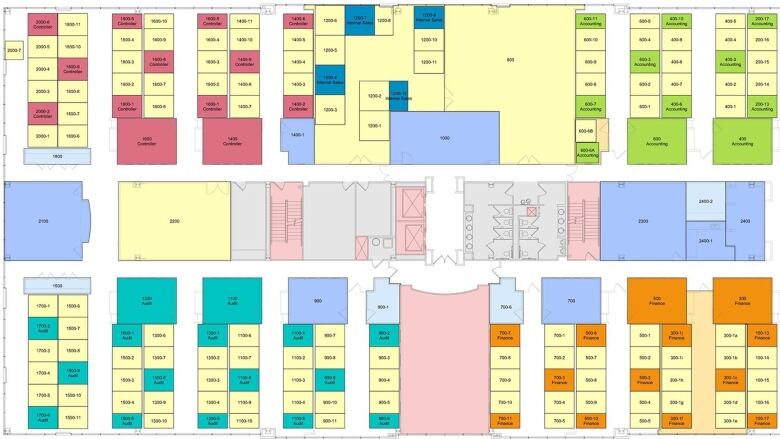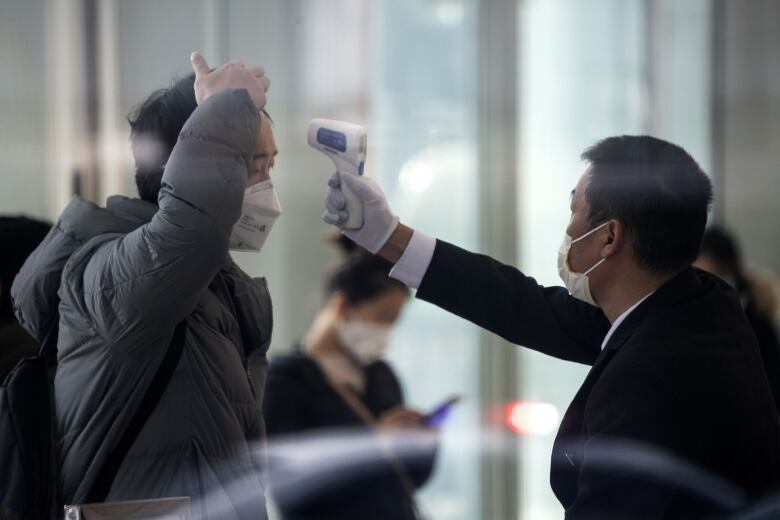What offices might look like in a post-COVID world
Employees going back to work in the coming weeks should be prepared for many changes

Workers looking forward to their return to the office and a sense of normalcy should brace themselves for a wide range of new safety protocols.
The post-pandemic workplace could include greater distance between desks, mandatory masks, shift workand lineups to take crowd-free elevators or get a temperature check, according to people who design and lay out offices for a living.
Advisers at Canadian commercial real estate and architecture firms have issued guidelines to clients on how to prepare for their employees' return to Canadian workspacesonce it's deemed appropriate. They say many changes will be required.
Spoiler alert: It's not going to be fun. And it's not going to be fast.
"It will be a very slow, graduated return to work with employees that are critical to the business," says Lisa Fulford-Roy, a senior vice-president with commercial real estate giantCBRE, based in Toronto. "A lot of the social areas that we use when we're at work break spaces, lunchrooms, food courts, cafs many of those will be coming back slowly, as well."
More personal space
Once staff arrive, there will have to be more breathing room. Seating plans should be modified in order to physically distance workers, say advisers.
That will reverse a decades-long trend. Companies in high-rent downtown cores across Canada have been cramming workers into closer proximity to each other for years. Open-plan offices with small workstations and few private offices can save space and reduce real estate costs. In some workplaces, dividers between cubicles have been abandoned, as well, to encourage teamwork and collaboration.

But studies done even before the pandemic have shown that employees working in shared or open-plan offices call in sick more often. The term "office plague" became common long before COVID-19 hit, to describe the phenomenon when a flu or cold spreads among an entire pod of workers.
Shift work
Now, amid fears of COVID contagion,those types of densely populated indoor environments seem downright dangerous.
Architecture firm Gensler has posted a to-do list for office managers transitioning employees back to work. Job number one is "rethink density."
The firm promotes a tool it created that uses"generative algorithms"to take the existing layout of a workplace and create new scenarios to meet physical distancing conditions. Desks can be staggered, giving every worker a larger perimeter of free space around them.
Annie Bergeron, Gensler's design director in Toronto, says the firm is also suggesting that workers' hours be modified. "One of the strategies that we are recommending for re-entry into the workplace is either shift workor a balance of work from home and work from the office, so that you don't have too many people re-entering the workplace at the same time," she said.

Shifts could be organized by days of the week or hours of the day, according to Bergeron. Simply having fewer staff on the premises at any given time would be preferable for companies hesitant to incur the expense of additional space to accommodate distancing protocols.
Temperature checks
Bergeron also says the firm has discussed screening measures with its clients, in order to avoid admitting workers with symptoms of the virus. "Some of the screening could include restricting entry into the building from only one access point, instead of several access points. There could be interaction with security, just to make sure that people aren't sick."
That could lead to lineups and wait timesto get into work.

Walmart and Amazon have implemented temperature checks for workers, and New York City Mayor Bill de Blasio has said offices will need to do the same. In Canada, Tim Hortons has mandated masks and temperature checks for employees.
Once employees get into the building, a number of other office routines will become more time-consuming, says Brent McKnight, an associate professor in strategic management at McMaster University's business school in Hamilton.
Along with lining up to board an elevator, there could be additional effort required in other scenarios:"Waiting to go into a copier room after someone is finished using it, having sanitization practices to do after leaving a shared meeting room," McKnight added.
One-way hallways
There could even be new ways to move around a building. "I think you'll see one-way hallways and clear directional pathways around the office," McKnightsays. "Perhaps even physical markers like what they have in grocery stores and other places,to show people what a physical distance of two metres actually looks like."

But all of these new practices may ease over time, says Fulford-Roy, of CBRE. "I think we're talking about a pre-vaccine phase and a post-vaccine phase," she said. "Certainly pre-vaccine, return to work isn't going to be anything like business as usual because of the social distancing that's required, and deep cleaning in between uses."
Eventually some protocols may be relaxed, as governments, companies and workers begin to feel secure that COVID-19 is under control. Until then,familiar workplaces and habits of the recent past may feel very different.
WATCH | What will the post-COVID normal look like:














_(720p).jpg)


 OFFICIAL HD MUSIC VIDEO.jpg)
.jpg)



























































































